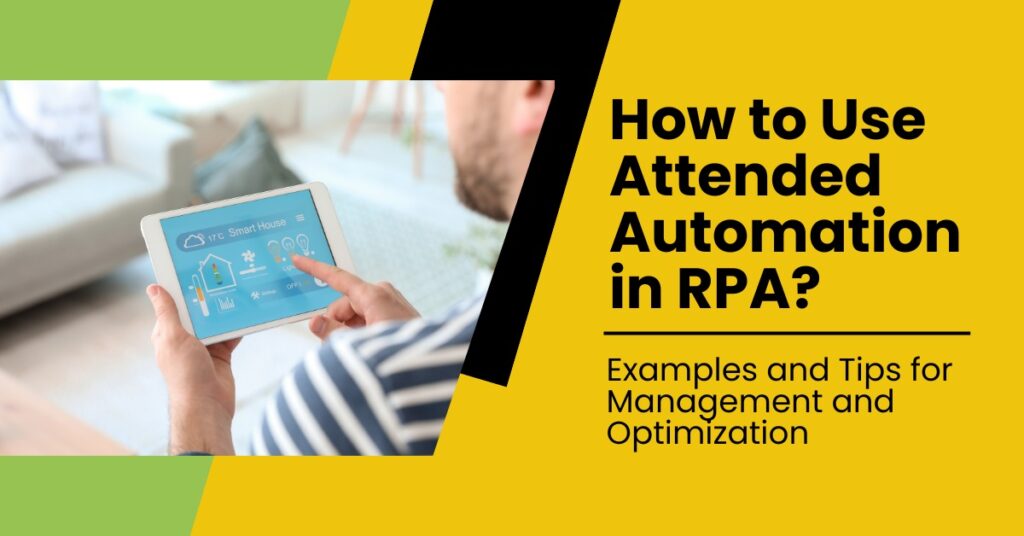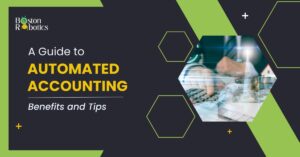When people hear about Robotic Process Automation (RPA), they usually think of it as a tool to automate large, repetitive tasks. But there’s a lot more to it than that!
RPA bots can be categorized in different ways. For example, based on how much human interaction they require, they can be either attended to or unattended by automation.
Both attended and unattended bots have their unique advantages for businesses. It’s important to consider both when you are planning to implement RPAs in your firm.
Unfortunately, some businesses tend to focus only on building unattended automation. They ignore the advantages of adding simpler, task-specific attended bots to their RPA solutions.
That’s why in this blog, we’ll be discussing attended automation management, and optimization. We’ll take a closer look at how attended bots work, explore different use cases, and offer some tips on how to optimize their performance. So let’s get started!
What is Attended Automation

Like this Attended automation, often associated with Robotic Process Automation (RPA), refers to a type of automation where a human worker and a software bot work together to complete tasks. In this setup, the software bot takes care of repetitive, rule-based tasks while the human worker handles tasks that require decision-making, empathy, or other complex cognitive abilities.
In attended automation, the bot typically operates on the same workstation as the human worker and can be triggered by specific actions or events. The human worker can monitor the bot’s activities, provide inputs as needed, and take control when necessary.
The primary goal of automation is to increase efficiency, reduce human errors, and free up human workers to focus on higher-value tasks that require creativity, critical thinking, or emotional intelligence. This collaborative approach between human and software agents has been used across various industries, including finance, healthcare, customer service, and supply chain management, among others.
Examples
Attended automation is all about human-bot collaboration. This means using software robots to support human workers in their day-to-day tasks.
One of the most common use cases for attended automation is to reduce the need for human interaction on critical tasks. Let’s see how with one such real-life example,
A credit reporting firm needed to issue refunds to customers quickly without disrupting existing workflows or hiring new staff, which was costly. The company was relying on outdated systems and spreadsheets, resulting in large operational costs and inaccurate data.
The company implemented a UiPath Attended automation solution in just eight weeks, which automated 80% of the refund issuing process. The solution integrated data from different systems into one centralized hub, streamlined refund issuing, and tracked all communication. As a result, operational costs decreased, the manual effort was reduced by 90%, and the company achieved ROI in just six months.
Attended automation also used in various industries. For example,
- In finance and accounting, automation can help with processing invoices.
- In healthcare, it can assist with claims processing and documentation.
- In retail, it can be useful for sending receipts or managing inventory.
- In human resources, attended automation can help with onboarding new employees.
- In payroll, it can assist with processing and voiding checks.
Overall, attended automation is a powerful tool that can help businesses streamline their processes, increase efficiency, and improve customer satisfaction.
Challenges of Attended Automation

When it comes to attended automation, there are certain challenges that users need to be aware of before implementation. Since humans are involved in the loop, attended bots must be quick and responsive to user actions.
The end-users interacting with the bot must feel comfortable while using it. The interface should be user-friendly and provide visual cues. It then guides them throughout the process, indicating the bot’s current execution step.
For example,
OpenBots Studio has special commands designed for user interaction, located under the Automation Commands – Input subgroup.
In addition, it must be resilient to different actions that the user may take since they rely on user input. To avoid issues during development or UAT, a thorough discovery and mapping process of the business task is essential.
By taking these challenges into account, it can be optimized to provide a seamless experience for users.
Some Advantages of Attended Automation
Attended automation offers several advantages that make it a popular choice for many businesses. Firstly, the development cycle for attended automation is shorter than for unattended automation, meaning faster implementation and results.
Attended automation are task-specific, tailored to address a specific need, which makes them efficient and effective. With human supervision during runtime, it requires fewer reporting, self-recovery, and logging mechanisms, reducing complexity.
Setting up attended automation is simple, requiring minimal configuration. For example, an OpenBots solution only requires installing an Agent on the target desktop. Users can then easily deploy automation through the Agent interface, improving productivity and accelerating ROI.
Conclusion
To sum up, Attended automation doesn’t require a complete separation between humans and robots; instead, a combination of both can create impressive automation. It allows humans and robots to work together, sharing tasks, working in parallel, and dynamically to improve efficiency, increase employee engagement, add value, and enhance customer service.
Focusing solely on automating processes available in ERP systems may limit the potential for high returns at scale.
Editor’s Choice:
How Robotic Process Automation is Revolutionizing Public Accounting
Streamlining Your Business with Boston Robotics Process Automation
Automation in Human Resources: Streamlining Recruitment and Onboarding Processes
The Rise of Intelligent Automation: How AI and Robotics Work Together




